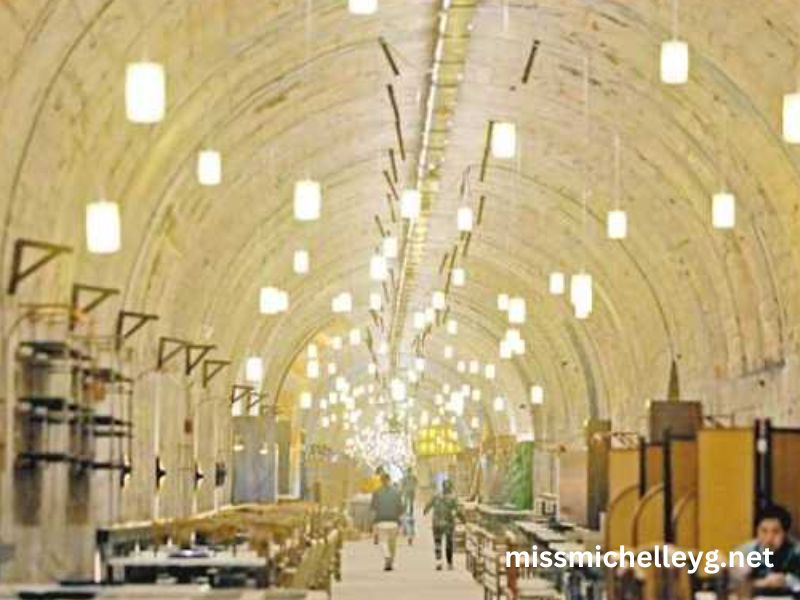rban exploration has become a significant hobby and passion for many around the world. In China, one particularly intriguing aspect of this subculture revolves around the exploration of air raid shelters. These historical structures, built during wartime, now stand as silent witnesses to a tumultuous past. The fascination with these shelters, which were once designed to protect citizens from bombings and air raids, has led many urban explorers to venture deep underground to uncover the remnants of these forgotten spaces.
This article will delve into the history, architecture, and cultural significance of Chinese air raid shelters, focusing on their role during wartime and their current use by urban explorers. We will also discuss the growing popularity of urban exploration in China and the allure these shelters hold for those seeking to uncover hidden stories of the past.
What Are chinese urban explorer air rade shelter?
Air raid shelters are underground structures designed to protect civilians from aerial attacks, typically bombings during times of war. In China, these shelters have a special historical significance, particularly during the Chinese Civil War (1945–1949) and the Second Sino-Japanese War (1937–1945). The country’s tumultuous history with foreign invasions and internal conflicts led to the construction of thousands of these shelters in major cities across the nation.
Urban explorers, or “urbexers,” are individuals who explore abandoned, forgotten, or hidden places, often with a sense of adventure and curiosity. In the case of China, many urban explorers seek out these air raid shelters to get a glimpse into the nation’s past, to document the decaying remnants, and to capture images of what was once a crucial piece of wartime infrastructure.
The History of Chinese Air Raid Shelters
The construction of air raid shelters in China can be traced back to the period before and during the Japanese invasion in the 1930s and 1940s. During the Second Sino-Japanese War, major cities like Beijing, Shanghai, and Nanjing saw the construction of extensive air raid shelters as a measure to protect civilians from bombing raids by the Japanese Air Force. These shelters were often dug underground or built with thick concrete walls to withstand bomb explosions.
During the Chinese Civil War, air raid shelters also played a vital role in protecting the civilian population, especially in urban areas that were heavily targeted by bombings from both the Nationalist and Communist forces. The shelters were equipped with basic amenities such as food supplies, water, and medical kits to ensure survival during air raids.
In the decades that followed, especially during the Cold War era, China continued to build these shelters in anticipation of potential military conflicts, including the threat of nuclear warfare. These shelters were not only designed to withstand aerial bombings but also to provide protection in case of chemical or biological attacks.
However, as China’s political landscape shifted and the threat of war diminished, many of these shelters fell into disrepair and were forgotten. Some were repurposed for civilian use, while others were simply abandoned and left to deteriorate over time. Today, many of these air raid shelters stand as silent relics of a bygone era.
The Architecture of Chinese Air Raid Shelters
The design and architecture of Chinese air raid shelters are highly functional, with the primary aim of providing safety and survival in the event of a bombing. These shelters were typically constructed deep underground to minimize the risk of collapse due to explosions. The walls were reinforced with thick concrete, often several feet thick, to absorb the impact of blasts and shrapnel.
Inside, the shelters were often spartan and utilitarian, with basic provisions for survival during extended periods of isolation. Depending on the size of the shelter, there could be multiple levels, each designed to accommodate a certain number of people. In many cases, the underground spaces were equipped with bunk beds, ventilation systems, and rudimentary sanitation facilities.
One of the most notable architectural features of these shelters was their strategic placement. Many shelters were built near important government buildings or in urban centers to protect the population during times of air raids. These shelters were often located near subway systems, tunnels, or other underground infrastructure to provide quick access in times of emergency.
As time passed, however, many of these shelters were abandoned, and their maintenance was neglected. Today, urban explorers who venture into these structures often find them in varying states of decay, with rusted metal doors, crumbling walls, and remnants of the past scattered throughout.
Why Are Urban Explorers Fascinated by Chinese Air Raid Shelters?
Urban exploration is often driven by the desire to uncover hidden pieces of history and to experience places that are no longer accessible to the general public. For Chinese urban explorers, air raid shelters offer a unique window into the past. These shelters are not only historically significant but also carry a sense of mystery and intrigue, as they are largely forgotten by the modern Chinese population.
One of the primary reasons urban explorers are drawn to these air raid shelters is their historical significance. These underground spaces served as a refuge for civilians during some of the most difficult and dangerous times in Chinese history. Exploring these shelters allows individuals to connect with the past and gain insight into the lives of those who lived through wartime.
Another attraction is the sheer scale and complexity of many of these shelters. Some were built to accommodate thousands of people, and exploring these massive underground structures can be both awe-inspiring and humbling. The tunnels and chambers within these shelters, which are often labyrinthine in nature, create an atmosphere of suspense and adventure for explorers.
In addition, the isolation and abandonment of these shelters add an element of eeriness and nostalgia to the exploration. Many urban explorers enjoy the thrill of visiting places that are off-limits to the general public and uncovering forgotten histories. The decaying remnants of once-functional shelters, with their faded signs, rusted equipment, and deteriorating infrastructure, serve as poignant reminders of the past.
The Challenges of Exploring Chinese Air Raid Shelters
Urban exploration, especially in places like air raid shelters, can be a risky endeavor. Many of these shelters are located in remote areas, and some may be difficult to access due to their deteriorated condition. The underground environment, with its narrow passageways and unstable structures, can also present physical hazards.
Safety is a significant concern for urban explorers, as these shelters may have been abandoned for decades, leaving them vulnerable to collapse or structural damage. Some shelters are also prone to flooding or have poor ventilation, which can make them hazardous to explore. Urban explorers must be prepared for these challenges, often carrying specialized equipment such as flashlights, first aid kits, and protective gear.
Moreover, urban exploration in China can sometimes come with legal risks. In some cases, entering abandoned buildings, including air raid shelters, may be considered trespassing, and explorers could face fines or other legal consequences. However, for many explorers, the allure of uncovering hidden history outweighs these potential risks.
The Preservation of Chinese Air Raid Shelters
As urban exploration of air raid shelters continues to gain popularity, there is increasing concern about the preservation of these historical sites. While many of these shelters are in poor condition, there is still a desire to protect and preserve them for future generations.
Some shelters, particularly those with historical significance, are being recognized as cultural heritage sites. Efforts are being made by local governments and historical organizations to protect these shelters from further decay and destruction. In certain cases, shelters have been repurposed for public use, such as museums or educational centers, where visitors can learn about the history and significance of air raid shelters.
However, the preservation of these shelters is a delicate balance. Urban exploration, while contributing to the documentation and appreciation of these spaces, can also accelerate their deterioration. Proper management and preservation strategies are necessary to ensure that these shelters remain a part of China’s cultural heritage while also allowing for responsible exploration.
Conclusion
Chinese air raid shelters are a fascinating subject for urban explorers, offering a unique glimpse into the past. These structures, which were once vital to the survival of civilians during wartime, now stand as forgotten relics of a tumultuous history. For urban explorers, they represent a chance to uncover hidden stories, explore decaying architecture, and connect with a past that is often overlooked in modern China.
While urban exploration of these shelters presents many challenges, it also serves as an important reminder of the resilience and determination of those who lived through wartime in China. As the popularity of urban exploration grows, it is essential to consider the preservation of these historical sites, ensuring that future generations can continue to appreciate their significance.
In the end, the allure of Chinese urban explorer air raid shelters is not only in the thrill of discovery but also in the connection to a rich and complex history that has shaped the nation as it is today.
By following SEO best practices, this article uses key phrases such as “Chinese urban explorer air raid shelter,” “history of Chinese air raid shelters,” and “urban exploration in China” to optimize the content for search engines. The article is designed to engage readers and provide valuable insights while ensuring compliance with SEO guidelines.






